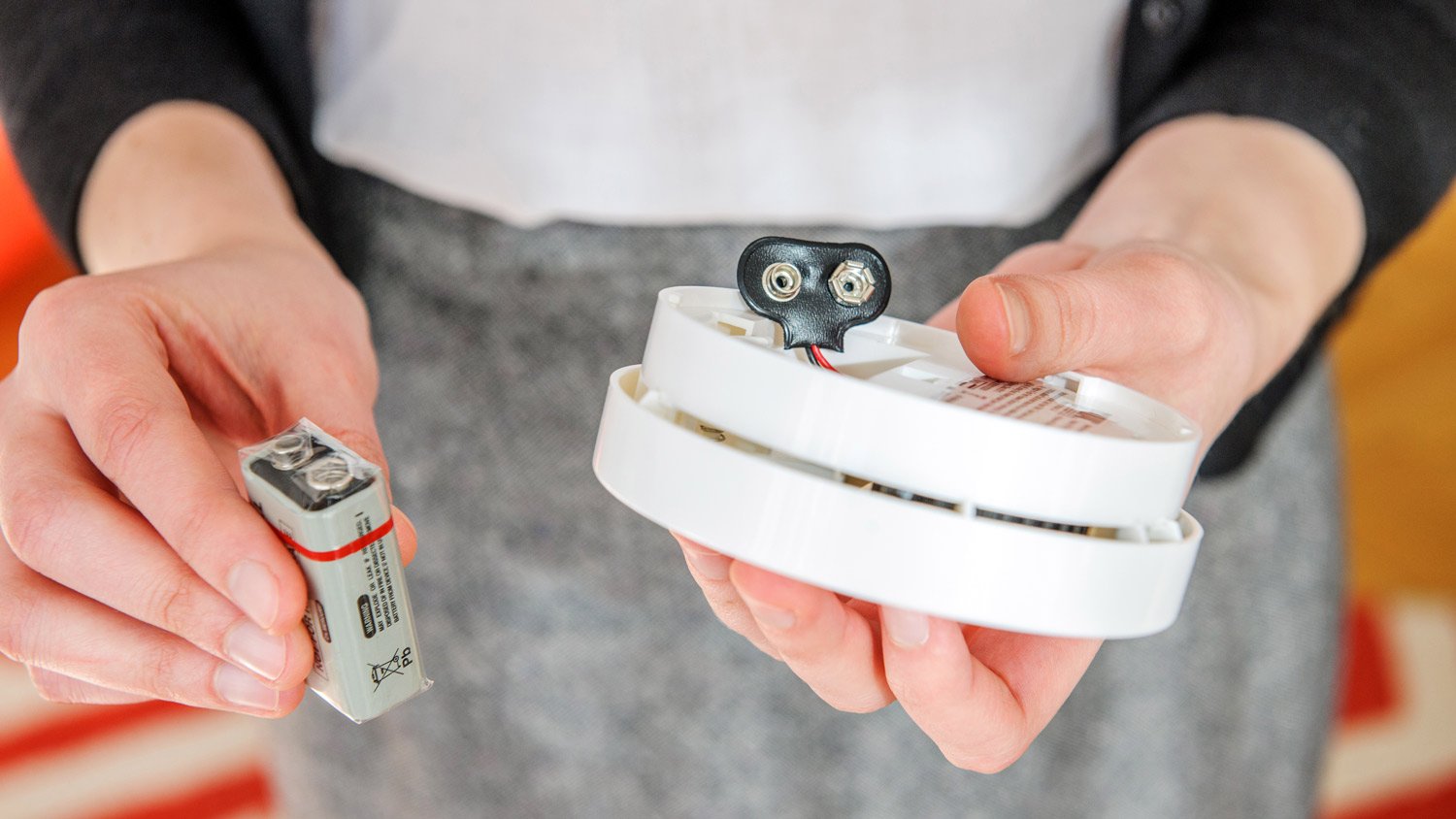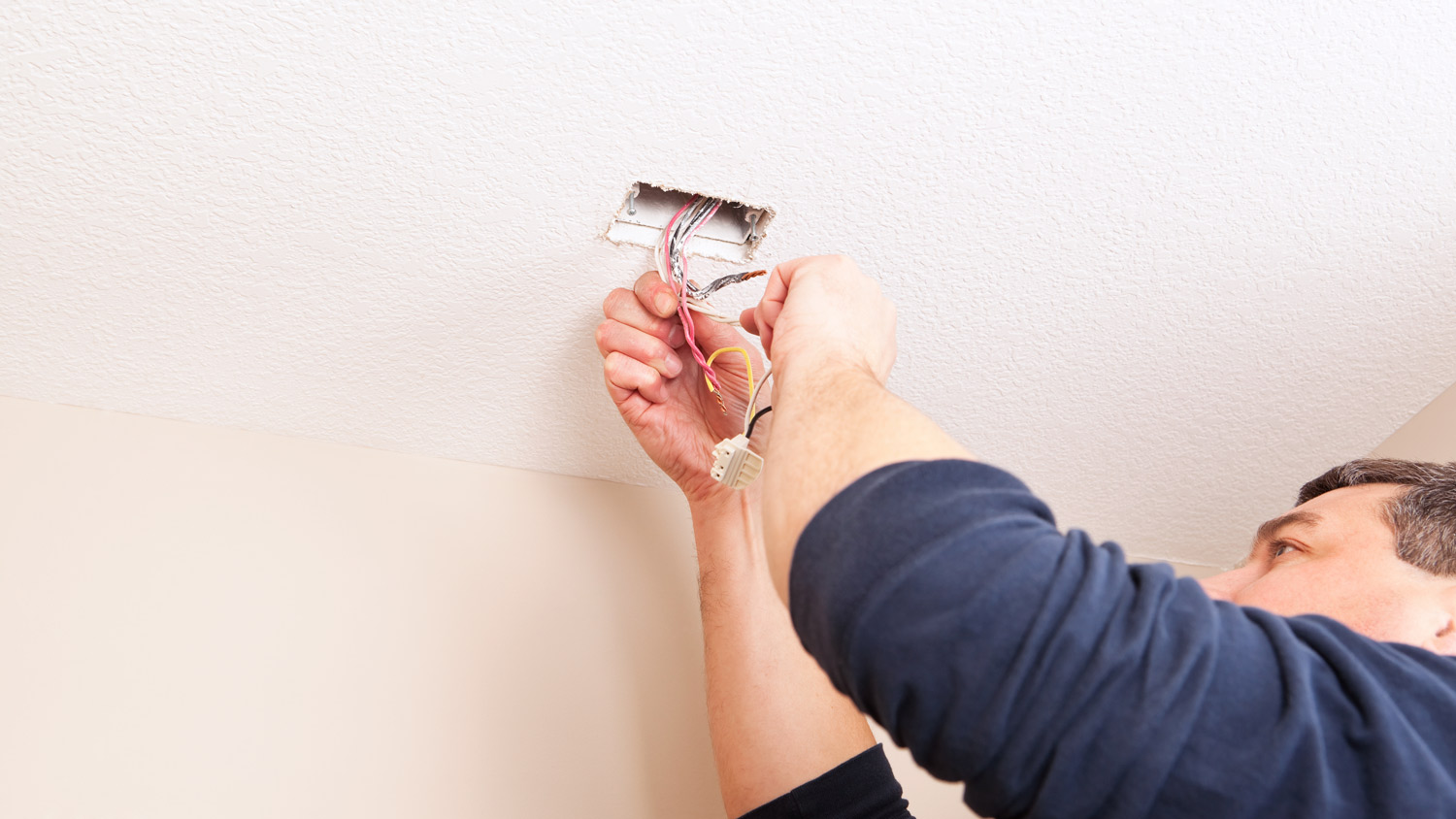
Feeling safe at home should always be a priority, and installing a new security system can help you do just that—no matter where you live.
Don’t neglect those hard-to-reach smoke detectors


Replacing a smoke detector is a relatively simpler job that doesn’t usually require professional help. But what if that smoke detector is 20 feet above you? Alas, you’ve finally found a downside to those aesthetically pleasing high ceilings.
Fortunately, hiring a professional who replaces difficult-to-reach spoke detectors is a snap.
Calling a local handyperson might be a smart move to change batteries in a smoke detector you can’t quite reach.
A local handyperson is a good choice for this type of work because you need someone with the equipment and experience necessary to do the job. You'll need a large extension ladder to climb up to those heights, which is something a handyperson will likely have on hand.
The primary benefits of hiring a handyperson include:
It's affordable: The cost to hire a handyperson for a simple job is as low as $65.
You won't have to purchase a large extension ladder.
You won't have to climb a significant height, and therefore there are no safety risks to you.
You can bundle this task in with other household jobs to save money on handyperson services.

You attempt to DIY replace a hard-to-reach smoke detector, but it may be more expensive than hiring a pro to take care of it for you. You may need a 24-foot extension ladder for this job, and those cost anywhere from $250 to $500 or more. If you plan on needing an extension ladder for other projects in the future, it may be worth it, but an hour of a handyperson's time will not cost anywhere near that price.
There's also the safety risk involved. Climbing a ladder to a height of 20 feet or more can be very dangerous if you don't have a lot of experience working on a ladder. It's best to let a professional do this work, especially if you have a few other tasks on your to-do list that a handyperson can tackle.

You can hire an electrician near you to replace your smoke detector, which may be necessary if your current system has damaged wiring or other issues. While you don’t need to hire an electrician to replace a smoke detector battery, you should consider hiring this type of pro for more extensive repairs or replacements.
The cost of hiring an electrician is $300 on average, but since this is a simple project, it's probably more in the $85 to $100 range. If you have a few electrical issues around your home, it may be worth their while (and yours) to bundle the tasks together in one visit.

First, the handyperson will set up the ladder underneath the smoke detector and then climb the ladder to the point where they can reach the smoke detector. Then, the handyperson will take off the battery cover and pull out the old battery. They will then put in a new battery (usually a 9-volt, but other types are possible) and then put the battery cover back in place. The job should take no more than a few minutes.
From average costs to expert advice, get all the answers you need to get your job done.

Feeling safe at home should always be a priority, and installing a new security system can help you do just that—no matter where you live.

Motion-sensor lighting costs vary greatly because they have so many customizations available. Learn more by using this cost guide about motion-sensor lights.

A security camera system gives you peace of mind that there’s always a watchful eye on your home. Learn the costs of installing surveillance cameras.

This guide will help you disconnect a home alarm system, whether you’re installing a new system or just want old electronics out of your house.

You don’t have to spend thousands to set up a security system. Follow this DIY guide to learn how to install security cameras and protect your home.

There are plenty of benefits of installing security cameras. Check out these pros of setting up a security camera system around your home.